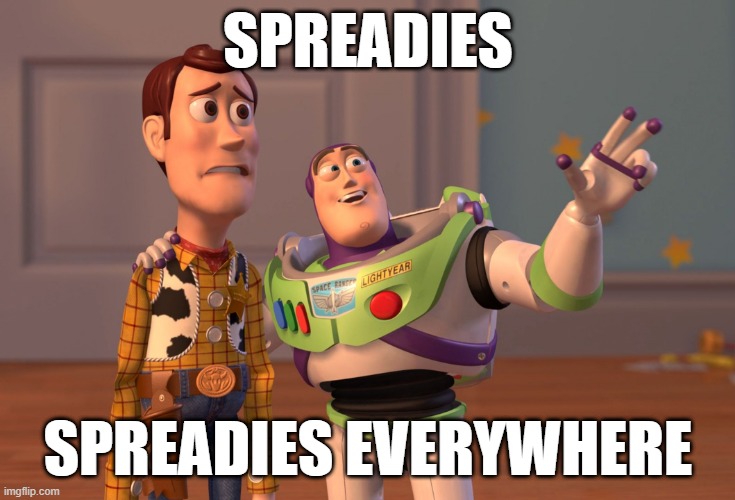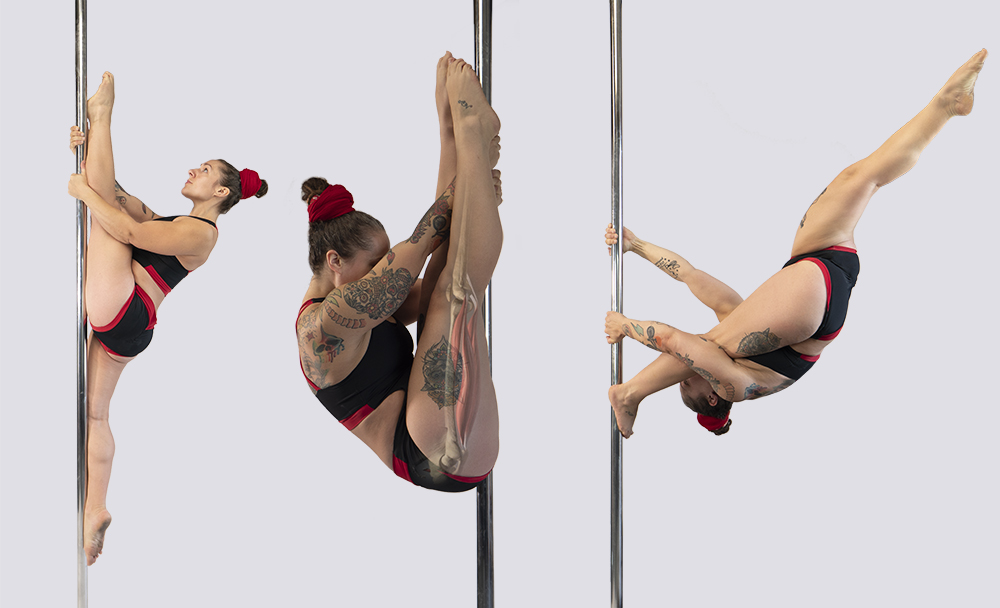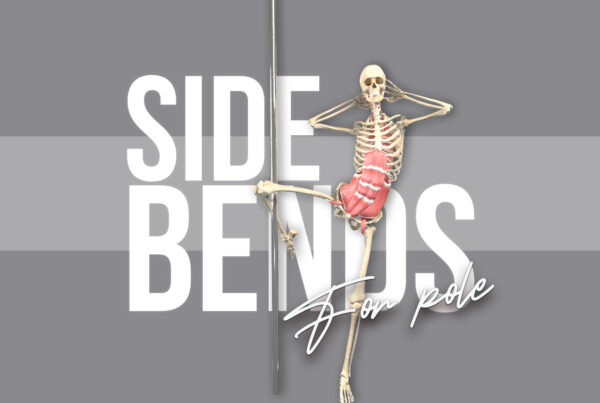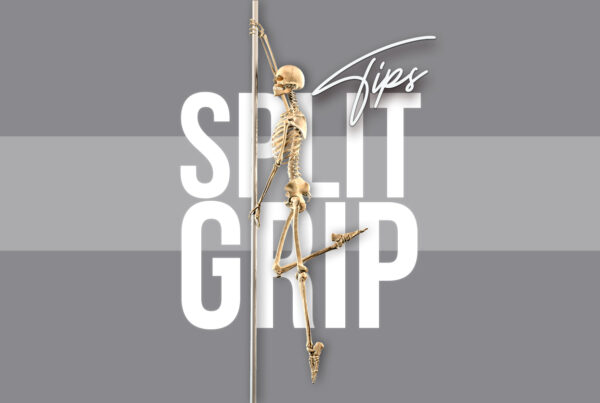You probably didn’t need to read my article on pole dance injury research to know that shoulders are… ‘ting, ting, ting’ yup, you guessed it – top answer when it comes to pole dance injuries.
I’ve talked about shoulders a lot recently (check my posts here if you wanna shoulder-nerd) – or join my Pole Proof Shoulder programme if you’d like to start your own shoulder care routine, with a little guidance from me and my coaching team in the Pole PT app!
Please know that I’m waaaay from done chatting shoulders and I promise I’ll come back to them shortly. But today, let’s talk hamstrings!
Hamstring injuries in pole dance
Looking at the research on this, Hamstrings are often coming up as the second most common injury site for pole dancers after shoulders, which is no wonder given our love for spreadies in pole.
Spreadies to the floor, spreadies to the pole, spreadies to the Gods…

Before we dive in to this, I want to quickly zoom-in to one of my favourite studies on this from Dr Joanna Nicholas’[i]. In that study, hamstrings were, indeed, the second most reported injury area after shoulders. But what’s useful about the Nicholas study is that it also cites injury types and potential causes, too. Yay!
Of the 12 hamstring injuries reported in that study, 11 of them were acute (resulting from a single traumatic event) and due to intrinsic mechanisms (e.g., inadequate flexibility), with the majority of injuries (8 injuries) being undiagnosed hamstring pain.
The remaining diagnosed injuries were: 2 strains (one of biceps femoris and one of retus femoris); 1 nerve related (irritated sciatic nerve); and 1 tendon-related (proximal hamstring tendinopathy).
The majority of the injuries occurred during front split manoeuvres with the specific moves listed as: Split up the pole; Allegra split; drop split; and over split stretch.
This kind of detail is incredibly useful because it allows us to be more specific in our risk assessments for pole, and in turn, helps us develop more specific risk-mitigation strategies.
Minimising the risk of hamstring injuries in pole
There are some general things we can do to help reduce the risk of hamstring injuries in pole, for example:
- Taking extra care when training split-based positions – like incorporating proper warm ups and making sure front split manoeuvres are not introduced too soon in studio syllabuses;
- Introducing screening – to ensure students have the required levels of passive and active flexibility to achieve the positions that those split-based tricks demand, before working on them on the pole;
- Dedicating time in our training to make sure our hamstrings are strong and able to handle the high demand of pole training. This means incorporating appropriate strength exercises and progressions;
- On top of that foundation, then making sure students have the benefit of gradual ‘on the pole’ progressions towards split based moves.
- Setting realistic expectations and avoiding pressure (on ourselves and our students) to eeek out every last degree of range in the splits moves we do on the pole. Yes, ‘lines’ are important, particularly if we are competing, but that is best built gradually over time, not as a result of ignoring and pushing past our limits in training. We can and should foster a culture of patience and not immediate gratification. Finding and celebrating beauty not just in the ‘flat split’ end-goal, but in every little degree along the way.
One pole dancer’s Jade split might be as straight as a sun beam. Another’s might have a more ‘pizza-slice’ aesthetic. Both are Jade splits. And pizza is awesome. Just saying.
In this post, I’m focusing on… drum roll please… hamstring strength! No surprises there – I mean, I AM a Strength and Conditioning Coach, after all! But because we’re coming at this from an injury-prevention / prehab angle, I asked our in-house Physiotherapist Georgina to get involved, too.
What’s the demand on our hamstrings when we pole?
Firstly, we move into end-range hip flexion quite often when we pole. I’m talking about the front leg in any split-based position, and any sits or spins where we’re bringing our torso and thighs closer together.

It’s these types of ‘split based’ positions where our hamstring is in a lengthened position – and which was highlighted as the primary cause of hamstring injuries in the Nicholas’ study.
But conversely, we also use the strength of our hamstrings in a ‘shortened’ position, with the hamstring muscles contracting to hold us on the pole – for example, like in a brass monkey, leg hang… or that top leg in a cupid.

When we create combos or routines on the pole, we’ll often be moving between these types of positions on the pole within short succession – lengthening the hamstring in a split move (often holding it in our end range), then quickly moving to hook the same leg onto the pole, shortening the hamstring and creating the strong concentric contraction we need to keep our leg gripped on the pole.
It’s a big demand on our hammies, so making sure they are strong, first generally and then more specifically, in both of these types of positions, and in moving between these positions is going to be useful for hamstring injury risk management.
With that in mind, I want to share a couple of specific hamstring strengthening exercises that I hope will help get you thinking about how you can approach training and prepping your hamstrings for the demand of pole in your own training.
‘Short’ hamstring exercise for pole dancers
Here is Pole PT Physio, Georgina of Fizzy Lemon Physiotherapy, explaining an awesome hamstring exercise, working in that ‘shortened’ (bent leg) position. I love this one because it really helps you to explore exactly what it feels like to ‘engage’ and recruit those hammies.
‘Lengthening’ hamstring exercise for pole dancers
The exercise below loads the hamstrings in a lengthened position. It’s one of my favourite exercises for pole dancers and features in a lot of my online programmes, for good reason– it provides a great strength foundation for those hip-flexion-heavy split moves we do on the pole.
Once you’ve mastered this movement, you can load it with a weight like so:
PLEASE NOTE: These exercises are just examples – they might not be suitable for you and it’s always best to individualise your training by speaking with an experienced Strength and Conditioning coach and/or Physiotherapist to see what’s best for your body and the training you do.
There are SO MANY ways you can incorporate hamstring strength work like this into your training. If you’d like to know more about how to organise your training for pole, my book Strength and Conditioning for Pole is available now in paperback, or as an immediate ebook download! Or you can download one of my online programmes if you want a little extra structure in working towards your pole goals!
And remember, folks… stay patient, trust the process and appreciate every angle along the way! + Pizza is awesome!
[i] Nicholas, J 2019, ‘The psychological, physiological, and injury-related characteristics of pole dancing as a recreational activity’, Doctor of Philosophy, The University of Western Australia. https://doi.org/10.26182/5e7d60d09e2cd







